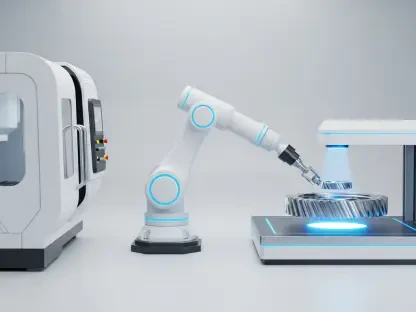The integration of Hot Isostatic Pressing (HIP) technology into the realm of Additive Manufacturing (AM) marks a significant advancement in the production of high-performance parts. By leveraging HIP, companies are able to overcome traditional limitations, optimizing the mechanical properties and reliability of 3D printed components. This article explores the contributions of Quintus Technologies and Hiperbaric, detailing how HIP is transforming industries such as aerospace, medical, and space by enhancing additive manufacturing capabilities and overcoming traditional challenges.
Quintus Technologies’ Innovations in HIP for AM
Quintus Technologies, a pioneer in high-pressure technologies, has been actively involved in adapting HIP for additive manufacturing to enhance the properties of 3D printed parts. Their innovative approach centers on high-pressure heat treatment, which combines high-speed cooling with exceptional temperature uniformity, effectively streamlining the post-processing stages that traditionally required multiple steps. This single-step solution not only reduces processing time but also significantly boosts the functionality and overall performance of 3D printed parts by addressing key issues inherent in the AM process.
The unique microstructures of 3D printed metal components necessitate specialized HIP treatments, and Quintus Technologies has tailored their processes to meet these specific demands. By customizing HIP protocols specifically for additive manufacturing, they have managed to avoid the pitfalls of using methods designed for cast products that are often unsuitable for 3D printed components. Their advancements in HIP aim to rectify common defects such as porosity and cracking while enhancing critical material properties including ductility, fracture toughness, elongation, and fatigue life, thereby pushing the boundaries of what AM can achieve.
As the industry trends toward producing larger AM parts, Quintus Technologies is focused on developing scalable HIP equipment capable of accommodating these new requirements. This includes the exploration of new materials, such as aluminum, which present unique challenges due to their higher cooling rates and specific treatment needs. The constant refinement and improvement of HIP processes are crucial for unlocking new capabilities within additive manufacturing, ensuring that parts not only meet but exceed the stringent demands of high-performance fields.
Hiperbaric’s Contributions to HIP and AM
Hiperbaric, well-known for its High Pressure Processing (HPP) technology in the food industry, has successfully transitioned its expertise to develop HIP technology that is tailor-made for additive manufacturing. Their strategic focus on critical industrial sectors such as aerospace and medical implants has propelled significant innovation within their HIP offerings, ensuring the elimination of defects in 3D printed parts and enhancing overall performance in these high-stakes applications.
Similar to Quintus Technologies, Hiperbaric has directed its efforts towards ensuring defect-free, high-performing 3D printed components. One of their most notable achievements is the development of their largest HIP unit, which is capable of handling parts up to 1 meter in size, demonstrating their commitment to meeting the industry’s expanding demand for scalable solutions. By designing technology that improves the mechanical properties of parts by removing defects like porosity, Hiperbaric ensures optimal material performance and reliability.
Hiperbaric’s advancements in HIP for AM signify their pivotal role in driving the technology forward and facilitating its broader adoption. Their focus on the specific requirements of additive manufacturing parts underscores their contribution to the continuous evolution and integration of HIP in high-performance fields. This ongoing dedication is fostering significant progress across various industries, illustrating the transformative impact of HIP technology in elevating the standard of 3D printed components.
Overcoming Challenges in HIP for Additive Manufacturing
The integration of HIP with additive manufacturing brings its own set of challenges, primarily due to the unique microstructures of AM parts, especially metal ones, which require meticulously tailored HIP treatments. Traditional HIP processes developed for cast products often fall short of delivering optimized results for 3D printed components, necessitating adjustments in HIP parameters to effectively eliminate defects and enhance the mechanical properties of the manufactured parts.
Both Quintus Technologies and Hiperbaric are vigorously addressing these challenges through their continuous research and development efforts. One of the primary objectives in HIP for AM is to eliminate common defects such as porosity and cracking while simultaneously improving material properties like ductility, fracture toughness, elongation, and fatigue life. By customizing their HIP processes, these companies are working to meet the stringent requirements of 3D printed parts, ensuring they deliver the requisite performance and reliability.
Despite the inherent challenges, ongoing R&D efforts are paving the way for future advancements in the field of HIP for AM. Projects such as the DioSiC initiative aim to extend the benefits of HIP technology to new materials and applications, offering promising prospects for the future of additive manufacturing. The continuous evolution and optimization of HIP processes are essential for overcoming current limitations and unlocking new potentials within the realm of high-performance, reliable, and scalable 3D printed parts.
Industry Applications and Trends
HIP technology’s benefits are particularly pronounced in high-performance and safety-critical industries, notably aerospace, medical, and space sectors, where the ability to produce defect-free, reliable parts is crucial. In these fields, the performance and safety of components are of paramount importance, making advanced post-processing techniques like HIP indispensable to achieving the highest quality standards. The growth of additive manufacturing in these sectors underscores the need for HIP technology to ensure parts meet stringent performance requirements.
As the trend towards producing larger AM parts accelerates, there are both new challenges and opportunities for HIP technology. The increasing size of 3D printed components calls for scalable HIP equipment that can accommodate these larger parts without compromising quality. Both Quintus Technologies and Hiperbaric are actively developing solutions to meet these new demands, emphasizing the importance of scalability in their HIP units to handle larger 3D printed components effectively while maintaining the integrity and performance of the parts.
The exploration of new materials, such as aluminum and advanced ceramics, also signifies the evolving landscape of HIP in additive manufacturing. These materials present unique cooling and treatment challenges, pushing the operational limits of existing HIP equipment. However, the continuous development of customized HIP processes promises to expand the range of materials that can benefit from this technology. This expansion showcases the potential for broader applications in high-performance fields, further solidifying the role of HIP in driving the future of additive manufacturing.
The Future of HIP in Additive Manufacturing
Integrating Hot Isostatic Pressing (HIP) technology into Additive Manufacturing (AM) represents a major leap in producing high-performance parts. HIP allows companies to address and overcome many traditional constraints, improving the mechanical properties and reliability of 3D printed components. This technology enables manufacturers to achieve greater density, strength, and longevity in their products, far surpassing what was previously possible with conventional methods.
Quintus Technologies and Hiperbaric are at the forefront of this transformation, demonstrating how HIP can redefine the standards in various industries. For instance, in aerospace, HIP-treated parts can withstand extreme conditions, significantly enhancing safety and efficiency. In the medical field, HIP allows for the production of implants and devices with superior durability and biocompatibility, ensuring better patient outcomes. The space industry also benefits, as components are subjected to rigorous demands and HIP ensures they meet the highest standards of reliability and performance. This convergence of HIP and AM is setting new benchmarks and simplifying solutions to traditional manufacturing challenges.









